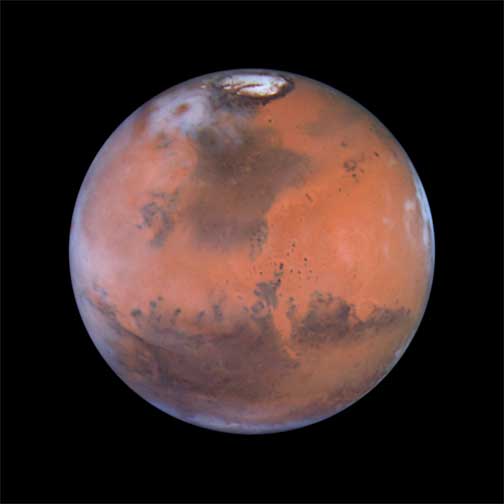You will need
- Amateur telescope or powerful binoculars
Instruction
1
The opposition of Earth and Marsand
When the Earth is exactly between the Sun and Marsω, i.e. at a minimum distance equal to 55.75 million km, the ratio of the planets is called confrontation. At the same time he Mars is in the direction opposite the Sun. Such violence occur every 26 months at different points of the orbits of Earth and Mars. This is the most favorable points for observation of the red planet in Amateur telescopes. Once in 15-17 years, there are the great confrontation: the distance to Marsand the minimum, and the planet reaches its greatest angular size and brightness. The last great confrontation was 29 January 2010. The next one will be July 27, 2018.
When the Earth is exactly between the Sun and Marsω, i.e. at a minimum distance equal to 55.75 million km, the ratio of the planets is called confrontation. At the same time he Mars is in the direction opposite the Sun. Such violence occur every 26 months at different points of the orbits of Earth and Mars. This is the most favorable points for observation of the red planet in Amateur telescopes. Once in 15-17 years, there are the great confrontation: the distance to Marsand the minimum, and the planet reaches its greatest angular size and brightness. The last great confrontation was 29 January 2010. The next one will be July 27, 2018.
2
The conditions of observation
In the presence of the Amateur telescope you should look for Mars in the sky in times of struggles. The surface detail available for observation only during those periods when the angular diameter of the planet reaches the maximum value. Large Amateur telescopes are available many interesting features on the planet's surface, seasonal evolution of the polar caps of Marsand the signs of Martian dust storms. In a small telescope you can see the "dark spots" on the surface of the planet. You can see the polar caps, but only during the great confrontations. A lot depends on experience, observations, and atmospheric conditions. So, the more observation experience, the less can be a telescope to "capture" Marsand parts of its surface. Lack of experience is not always kompensiruet expensive and powerful telescope.
In the presence of the Amateur telescope you should look for Mars in the sky in times of struggles. The surface detail available for observation only during those periods when the angular diameter of the planet reaches the maximum value. Large Amateur telescopes are available many interesting features on the planet's surface, seasonal evolution of the polar caps of Marsand the signs of Martian dust storms. In a small telescope you can see the "dark spots" on the surface of the planet. You can see the polar caps, but only during the great confrontations. A lot depends on experience, observations, and atmospheric conditions. So, the more observation experience, the less can be a telescope to "capture" Marsand parts of its surface. Lack of experience is not always kompensiruet expensive and powerful telescope.
3
Where to look
The evening and morning Mars is visible in the red-orange light, and in the middle of the night in yellow. In 2011, Mars can be seen in the sky during the summer and until the end of November. Until August planet can be seen in the constellation Gemini, in the Northern hemisphere of the sky. Since September, Mars is visible in the constellation of Cancer. It is located between the constellations of Leo and Gemini.
The evening and morning Mars is visible in the red-orange light, and in the middle of the night in yellow. In 2011, Mars can be seen in the sky during the summer and until the end of November. Until August planet can be seen in the constellation Gemini, in the Northern hemisphere of the sky. Since September, Mars is visible in the constellation of Cancer. It is located between the constellations of Leo and Gemini.
Note
If the experience of observation is small, should wait a period of confrontation.
